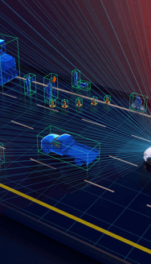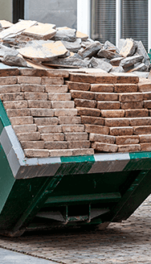Distance sensors: measuring distances up to 1 meter
Ultrasonic or laser sensors
The first option is to use sensors based on ultrasound, which emit a sound wave and then wait for the reflection. The speed of sound through air is known, so the distance can be calculated from the time between emission and reception of the reflection. The technology is relatively cheap.
Read more...The advantage of sound is that it reflects very well, so it can be controlled and even be used to look around a corner. There is also a disadvantage to this property, however. If the wave does not hit a surface head on, but at an angle on a sloping and smooth surface, then nothing will be reflected or measured at all.
The same time-of-flight principle can also be used with light. In this case, a pulse of light is emitted by a laser, and its reflection is detected. This is clearly a much faster solution. The disadvantage is that this kind of laser sensor is slightly more expensive and more sensitive to dust. In something like a saw, the sensor can be kept clean with a jet of air, but it is often easier to simply use an ultrasonic sensor. This kind of sensor is not sensitive to dust, yet it is just as accurate.
Ultrasonic and laser sensors are therefore related. They are both single-point measurements, and only measure in the line of sight. A laser sensor is smaller and more compact. An ultrasonic sensor is not sensitive to dust, but it is sensitive to wind because that can affect the sound wave. The angle of incidence and exit is also slightly more critical with sound than with light.
Measuring short and long distances
Both of these methods work over shorter and longer distances. Ultrasonic sensors are not able to cope with miles, as this would require an excessively loud shock wave, but they can easily cope with distances of up to around 20 meters. The limit for a laser sensor is hundreds of miles, but the limit for accurately reading a scale with this technology is around a meter. For distances longer than a meter, special long-distance sensors are available.
Featured distance sensors
Need some help?
Our brand-independent sensor database only lists a selection of the sensors available. There are so many different technologies and manufacturers that our online sensor database can never be 100% complete. If you can’t find what you’re looking for, or you have a question, send an e-mail to our sensor experts. We’ll gladly help you with your search.






